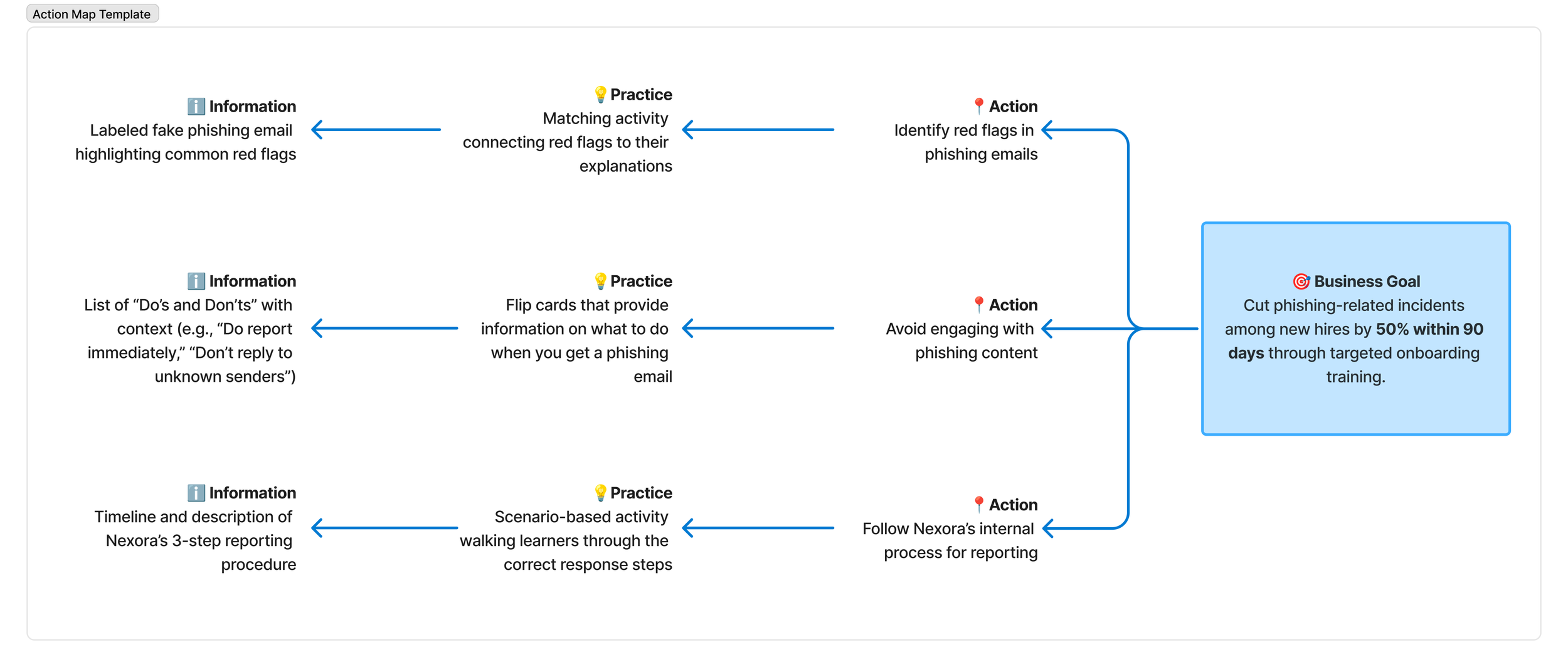
Recognizing and Reporting Phishing Emails
A short, practical Rise course designed to help new hires confidently recognize red flags and report phishing attempts before it's too late.
Responsibilities
Visual Design, Microlearning Development, Action Mapping, Storyboarding, Prototyping
Software Used
Figma, FigJam, Adobe Illustrator, Articulate Rise, Mighty
AI Used
ChatGPT
Duration
1 week
Why I Created This Project
Phishing awareness is a standard compliance topic—but that doesn’t mean it should be forgettable. I created this Rise course to challenge how we typically deliver “basic” cybersecurity training.
I wanted to see what would happen if I approached a common topic with the same level of care, storytelling, and intentionality I’d use for something more complex. The goal wasn’t to impress with novelty—it was to design something useful, direct, and learner-friendly. I built it around a fictional consulting company, Nexora Strategies, and imagined what training might look like for their fully remote, tech-enabled workforce.
Problem and Learning Goal
Nexora Strategies has experienced a rise in phishing-related incidents, particularly among new hires. These incidents impact both client trust and internal security. The primary business goal was to reduce unintentional phishing clicks among new employees by 50% within 90 days.
What learners need to do:
→ Identify common phishing tactics
→ Avoid engaging with suspicious emails
→ Report phishing attempts using Nexora’s internal process
Alignment Map
I created a full alignment map to ensure each module had a clear objective, interaction, and instructional purpose. I didn’t want anything in the course to feel like filler. Every screen needed to move the learner closer to doing the right thing in a real-world scenario.
Action Map
I mapped out three specific actions learners should be able to take by the end of the course:
1. Identify phishing red flags
2. Avoid engaging with phishing content
3. Follow internal reporting procedures
From there, I designed one interaction and one information element for each action, ensuring everything was directly tied to behavior change.
Designing the Solution
To avoid overwhelming the learner, I used simple, modern illustrations with soft transitions. Each lesson includes visual breaks and bite-sized layouts that mirror the cognitive design principles of chunking and pacing.
The color palette and illustrations keep the tone approachable while reinforcing Nexora’s fictional brand identity. Transition effects were kept minimal and purposeful—used to signal shifts in topic rather than decorate.
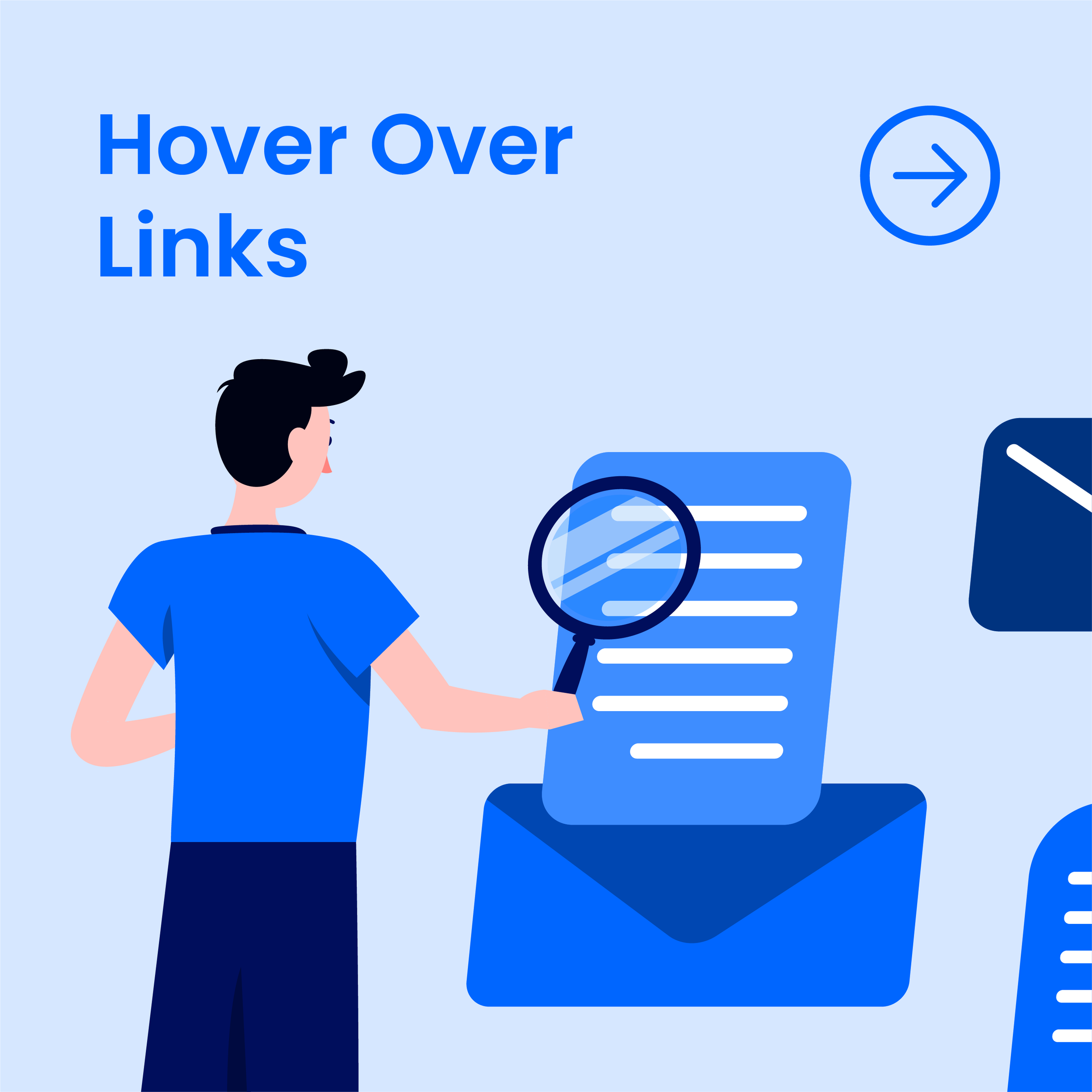
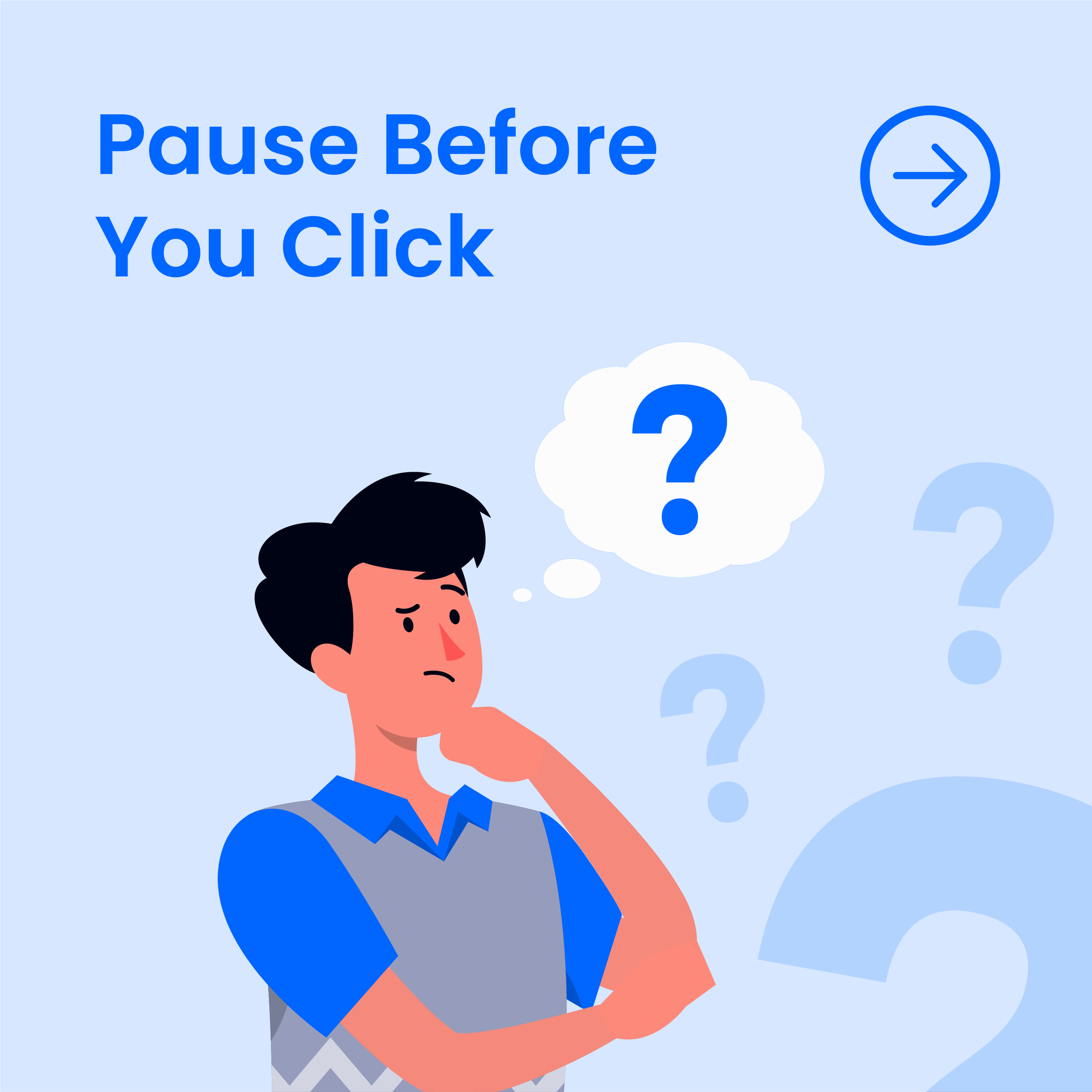
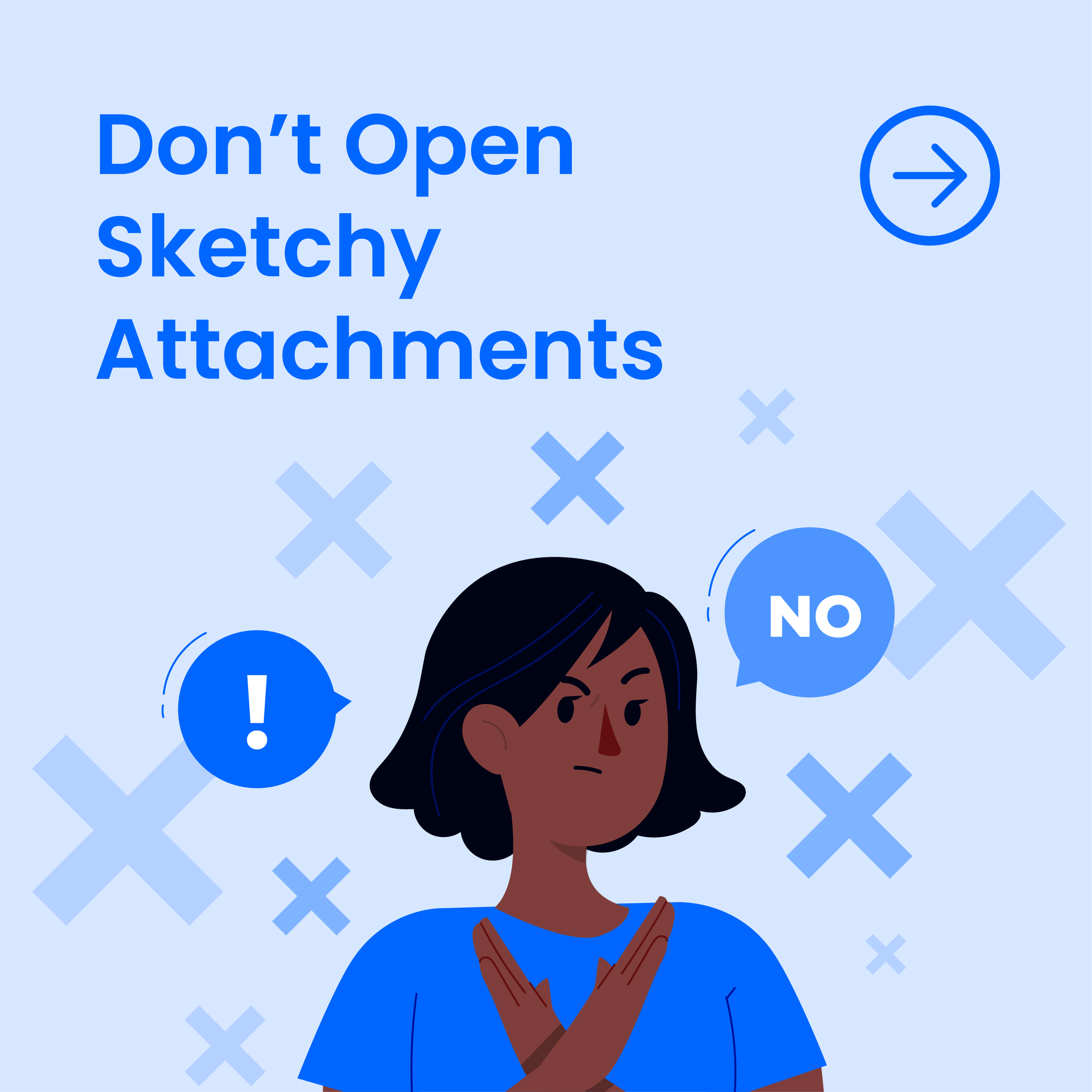

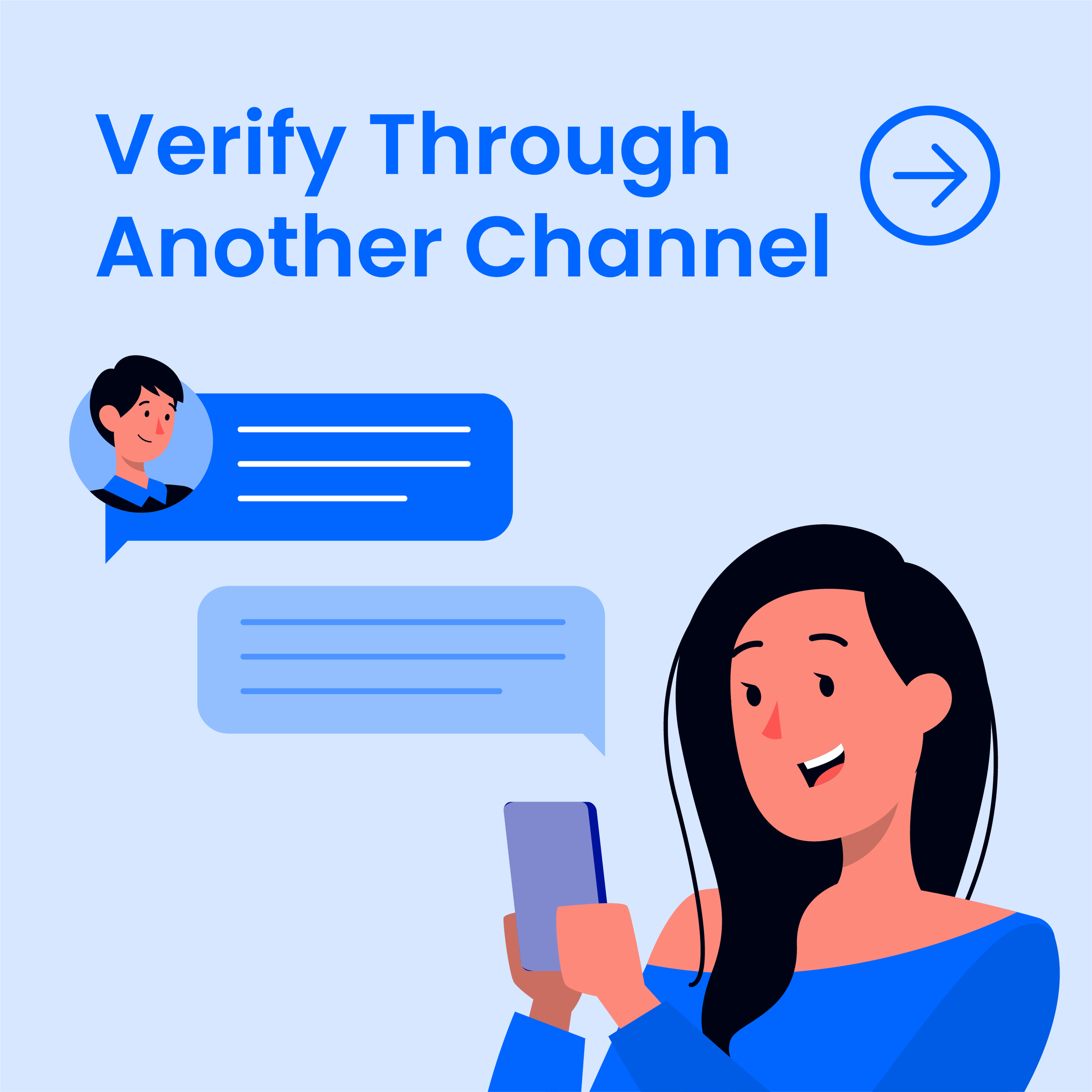

Downloadable Takeaway
Learners walk away with a quick-reference PDF guide that breaks down what to look for and how to respond. It’s designed for real-world use and can be saved to their desktop or printed for reference.
Collaborating with an SME
Although this was a fictional project, I still sought feedback from a real SME. My fiancé, Richard, is a service desk lead for a tech company that deals a lot with these types of tickets from different clients that his team services. He walked through the first draft and provided actionable insight from a lead's perspective.
One key piece of feedback was to remove any mention of "hovering over links" as a safety tip, as it could lead to accidental clicks. Based on that, I revised the training to instead promote reporting any suspicious content immediately without interacting with it.
Reflection
I wanted to create a course that respects the learner's time while delivering the kind of training that actually sticks. By designing with behavior change in mind, and iterating based on real feedback, I created something I’d be proud to hand to any onboarding team.
This project also challenged me to think beyond flashy interactions and focus on clarity, relevance, and the everyday pressures learners face. Real change doesn’t happen because someone watched a video or clicked through a checklist, it happens when we meet learners where they are and give them tools they can actually use.
What’s Next
If this were a live course, I’d recommend building on it with a few optional post-onboarding touchpoints, like a phishing recap email or a short scenario quiz delivered a few weeks later. I’d also explore creating a second module for managers on how to reinforce safe behaviors within their teams, especially as remote and hybrid work environments grow.
Lastly, I’d love to expand this concept into a full cybersecurity series for Nexora, one that keeps learners engaged over time rather than trying to solve everything in one session.
View My Other Projects
Developing Learning Experiences at Allegro Media Design
Created client-ready e-Learning solutions at Allegro Media Design that blended storytelling, interactivity, and brand-aligned visuals using Vyond animations and Articulate Storyline to deliver effective and engaging training content for diverse agency clients.
e-Learning Development · Visual Design · Content Design
Scenario-based course that helps new managers handle team conflict with confidence
Developed a scenario-based e-learning course that equips managers to navigate workplace conflict with confidence by practicing effective communication through interactive decision points and realistic dialogue.
e-Learning Development · Visual Design



